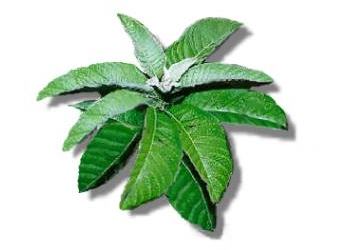You are currently browsing the category archive for the ‘Cystitis’ category.

Filipino term: Bilabila
Ingles: Quitch grass
Traditional Herbs
Intire Plants can be used:
Ten grams of fresh plants boil five glass of water. cool and drink two times a day. Five grams of root dried materials, boil five glass of water, cool and drink two times a day.
The number one cleanses blood,rheumatism, gout, stomach disease, and others, all types of catararh due to cold, fever, gastritis, gall bladder, etc., promotes perspiration, increases urine,The root excellent neutralize blood preasure
General An excellent remedy in excessive irritability of the bladder, dysuria, cystitis, gonorrhoea. …
Dose.
Tincture or infusion by boiling two ounces in a quart of water until it is reduce to a pint. To be taken in four doses in 24 hours.
Posted by Philippine Herbal’s at 10:08 PM
Source: http://mountainherbs.blogspot.com/2009/05/cleanses-blood.html

Parts utilized
Leaves (fresh or dried).
Mature, healthy, fully expanded leaves are harvested while senescent leaves are discarded. Air-dry until they crumble when crushed with the fingers. Store in amber colored bottles in a cool, dry place.
Constituents
• Volatile oil, 0.1 – 0.4% – l-borneol, 25%, l-camphor, 75%, limonene, saponins, sesquiterpene and limonene, tannins, sesquiterpine alcohol; palmitin; myristic acid.
Uses
Folkloric
Leaves as poultice for abscesses.
Decoction of roots and leaves for fevers and cystitis.
Sitz-bath of boiled leaves, 500 gms to a ballon of water, for rheumatic pains of waist and back.
Applied while hot over the sinuses. Used for wounds and cuts.
Fresh juice of leaves to wounds and cuts.
Poultice of leaves to forehead for headaches.
Tea is used for colds and as an expectorant; likewise, has antispasmodic and antidiarrheal benefits.
Postpartum baths.
Decoction of leaves, 50 gms to a pint of boiling water, 4 glasses daily, for stomach pains.
Preparations
• Fever: decoction of roots; boil 2 – 4 handfuls of the leaves. Use the lukewarm decoction as a sponge bath.
• Headaches: apply pounded leaves on the forehead and temples. Hold in place with a clean piece of cloth.
• Gas distention: boil 2 tsp of the chopped leaves in 1 cup of water for 5 minutes. Drink the decoction while warm. Also used for upset stomach. • • Postpartum, for mothers’ bath after childbirth.
• Boils: Apply pounded leaves as poultice daily.
• Diuretic: Boil 2 tbsp chopped leaves in 2 glasses of water for 15 minutes. Take 1/2 of the decoction after every meal, 3 times a day.
Camphor cultivation
• Can be cultivated as a source of camphor. Experiments in China produced 50,000 kilos of leaves per hectare, with a possible borneol yield of 50-200 kilos per hectare. L-borneol is easily oxidized to camphor. source
New applications
As a diuretic and for dissolution of renal stones.
As a diuretic in hypertension and fluid retention. Also used for dissolution of kidney stones. Some clinical studies, including double blind/placebo radomized studies, have shown encouraging results for Sambong to be both safe and effective in the treatment of kidney stones and hypertension. The National Kidney and Transplant Institute has promoted the use of this herbal medicine for many renal patients to avert or delay the need for dialysis or organ transplantation.
Being promoted by the Department of Health (DOH) as a diuretic and for dissolution of renal stones. One of a few herbs recently registered with the Bureau of Foods and Drugs as medicines.
Other benefits
Possible benefits in use patients with elevated cholesterol and as an analgesic for postoperative dental pain.
Studies
• Sesquiterpenoids and plasmin-inhibitory flavonoids: Study yielded two new sesquiterpenoid esters 1 and 2. Compound 2 showed to be slightly cytotoxic. Nine known flavonoids were also isolated, two of which showed plasmin-inhibitory activity. source
• Anticancer: Study of methanolic extract of BB suggest a possible therapeutic potential in hepatoma cancer patients.
• Urolithiasis: Study shows sambong to be a promising chemolytic agent for calcium stones
Cystitis is the inflammation of the urinary bladder, characterized by painful and scanty urination.
1. Sambong Leaves
Other name:Blumea Balsamera

Decoction 1 cup of chopped fresh leaves in 2 glasses of water
for 15 minutes.
Dosage:
Adults: 1/2 cup,3 times a day
Children:( 2-6yrs.) 2 tables spoon,3 times a day.
( 7-12yrs.) 1/4 cup,3 times a day.
2. Pandan leaves:
Other name: Pandanus amaryllifolius

Decoction: 1 cup of chopped fresh leaves in 2 glasses of water
for 15 minutes.
Dosage:
Adults: 1/2 cup,3 times a day
children:( 2-6yrs.) 2 tables spoon,3 times a day.
( 7-12yrs.) 1/4 cup,3 times a day.
3. Papaya leaves and green fruit

Decoction 1 cup of chopped fresh leaves and 1 cup
chopped green fruit in 4 glass of water for 15 minutes.
Dosage:
Adults 1 cup 3 times a day
children:( 2-6yrs.) 1/4 cup, 3 times a day.
( 7-12yrs.) 1/2 cup,3 times a day.
Source: http://mountainherbs.blogspot.com/2009/05/acute-and-chronic-cystitis.html
